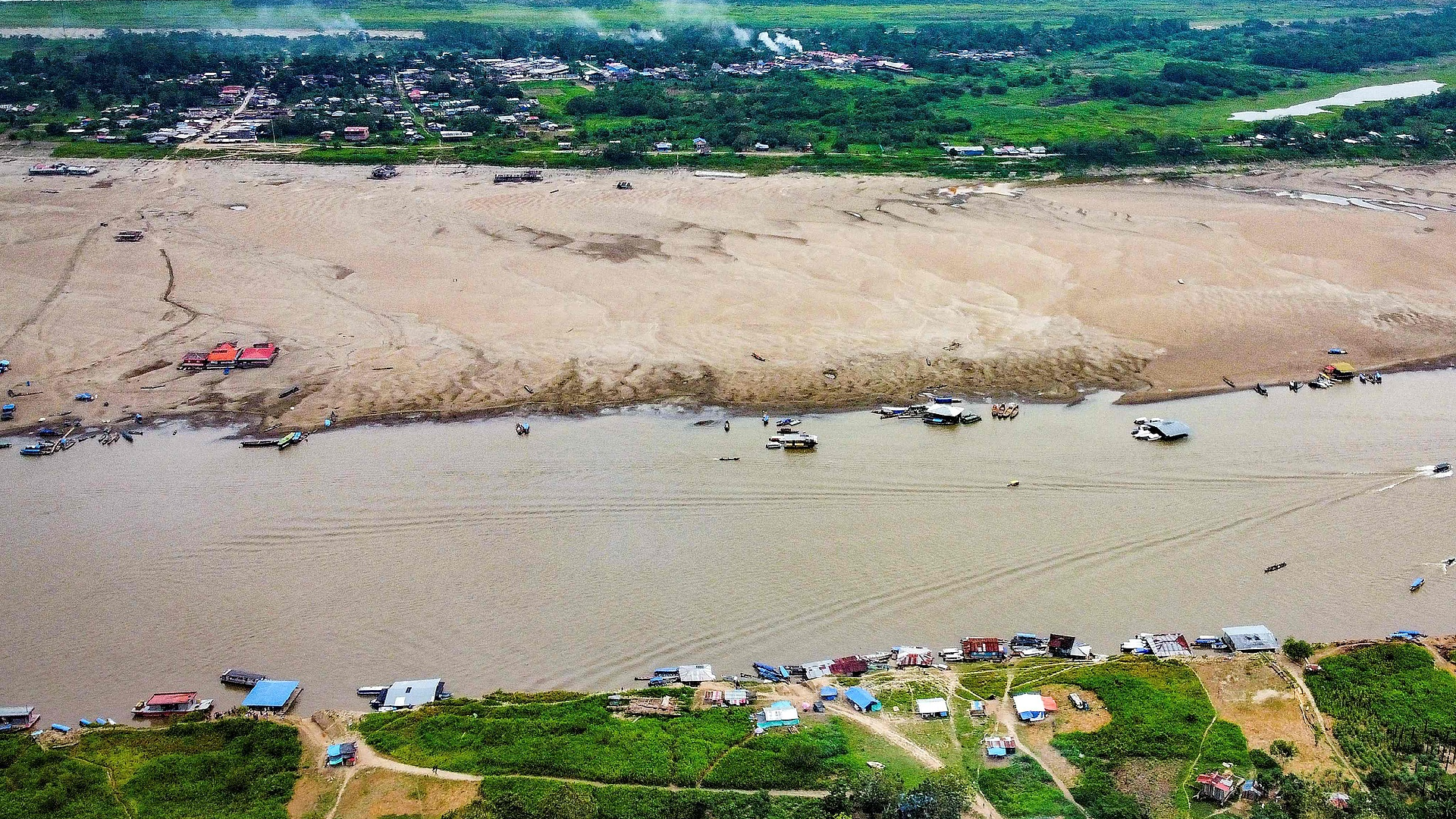Report finds Amazon's levels in Colombia reduced by up to 90%
A government agency reported on Thursday that the Amazon River’s levels in Colombia have decreased by as much as 90 percent as South America endures a severe and widespread drought.

This river, known as the largest in the world by volume, traverses several countries, including Brazil, Peru, Bolivia, Ecuador, Venezuela, Guyana, French Guiana, and Suriname. It has been severely affected by the recent drought, which has also contributed to the spread of wildfires across the continent.
"The water level has decreased between 80 and 90 percent in the last three months due to drought caused by climate change," stated Colombia's National Unit for Disaster Risk Management.
The impact of reduced water levels is particularly acute for Indigenous communities relying on the river for sustenance and transportation, the agency noted.
In recent days, boats have become stranded in Leticia, the capital of the Amazonas department in Colombia, as vast areas of land have been exposed due to the low water levels.
Situated near the borders of Brazil and Peru, Leticia serves as a vital trading hub along the Amazon River. Residents have commented that this drought is the worst they have witnessed in at least fifty years.
Reports from Europe's Copernicus Atmosphere Monitoring Service revealed that this year's wildfire activity in South America is "markedly above average," with heightened incidents particularly in the Amazon region and the Pantanal wetlands.
Wildfires are currently active in various countries, including Colombia, Peru, Ecuador, Brazil, and Bolivia.
Ecuador faces severe energy shortages due to its worst drought in six decades, leading to the implementation of rolling blackouts and red alerts across 20 of its 24 provinces, as the nation relies heavily on hydroelectric power.
In Brazil, dense smoke has enveloped major cities like Brasilia, Rio de Janeiro, and Sao Paulo, with smoke occasionally drifting over to Argentina and Uruguay.
Additionally, Bogota, the capital of Colombia, has been rationing municipal water for several months.
Ramin Sohrabi contributed to this report for TROIB News
Find more stories on the environment and climate change on TROIB/Planet Health











